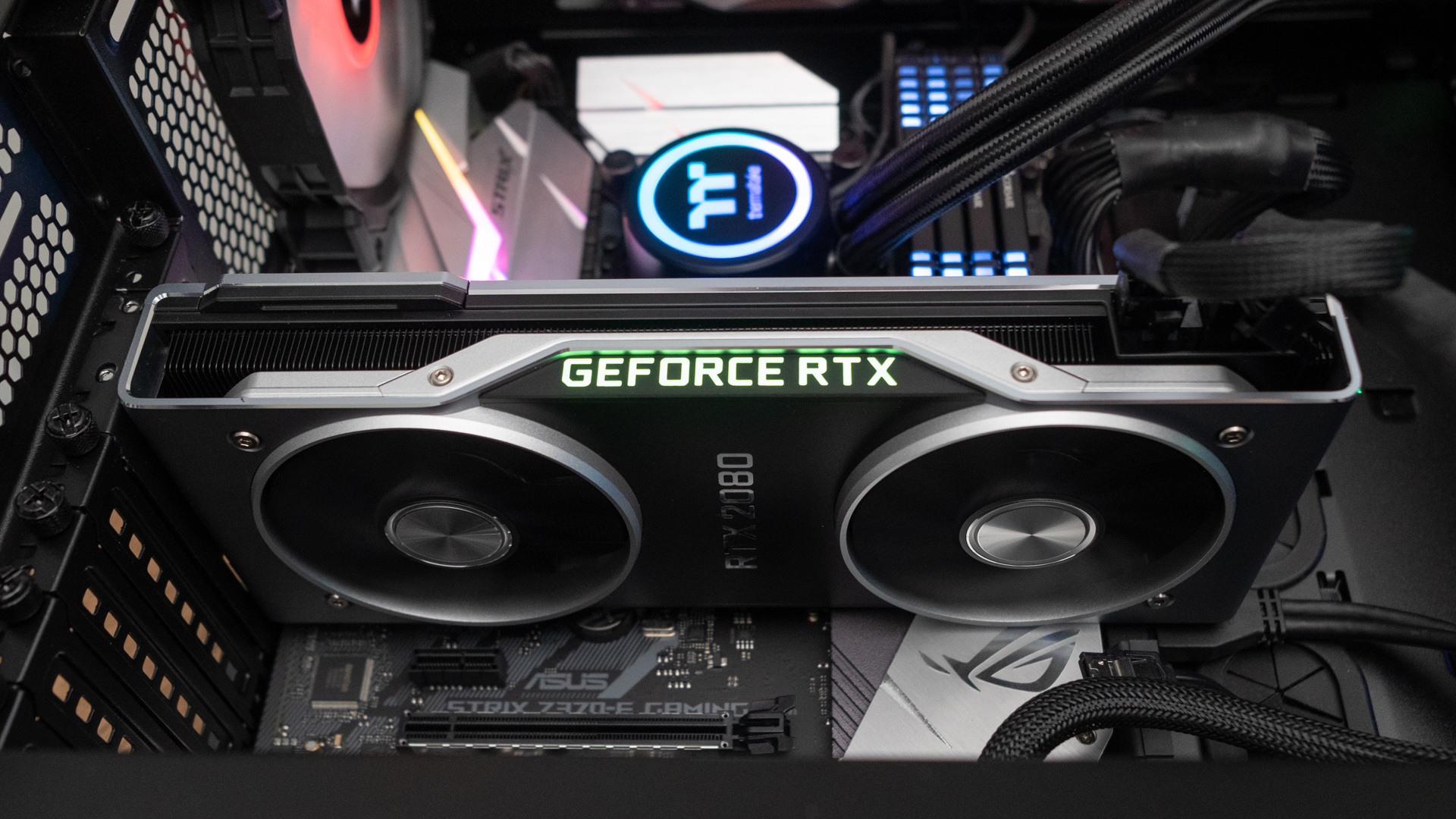Nvidia to stop making RTX 2080 and 2070 GPUs that aren’t so well-suited to overclocking
All graphics cards should be created equal

According to a new report, from next month Nvidia is going to use the exact same GPU on its GeForce RTX 2080 graphics cards, as opposed to two slightly different variants – and the same is true for the RTX 2070.
Wait a minute, some of you may well be thinking: Nvidia doesn’t use the same GPU on any given RTX 2080? Or a 2070? No, it doesn’t – there are actually two tiers of variants for both GPUs – and this was discovered a few months back to the chagrin of many who have bought one of these graphics cards. This requires a little background explanation, so let’s dive in.
As Tom’s Hardware reports, the folks behind GPU-Z (a utility which sniffs out detailed info on the hardware in your PC) found that the GPUs of the RTX 2080 actually had two different device IDs, and the same was true for the RTX 2070.
- These are the best free games on the PC
- How to overclock your CPU
- Nvidia vs AMD: which should be your next graphics card?
To focus on the RTX 2080, that was using the TU104 die, but in two different spins: the TU104-400-A1 and TU104-400A-A1. In other words, a standard version and an ‘A’ variant (the difference being the 400A), with the latter being what’s known as a higher-binned die.
What does that mean? Quite simply, when a GPU is made (or indeed a processor), some chips come out better than others, and will have better tolerances and be more stable when it comes to overclocking. All chips will be quality tested to function to a baseline specification, but some can be pushed further than others in terms of performance. This is known informally as the ‘silicon lottery’ (in other words, if you’ve bought a good one, you got lucky).
What Nvidia is doing here (but not for much longer) is selling the higher quality ‘A’ chip to graphics card manufacturers for use in their models which are overclocked, with the other ‘non-A’ GPU destined for use in graphics cards which run at standard clocks.
So as you can imagine, the discovery that there are two different strains of GPU with the RTX 2080 and 2070 caused some controversy, and unhappiness from those who found out they had a video cardfeaturing the lesser variant of their particular chip.
Sign up for breaking news, reviews, opinion, top tech deals, and more.
There are some caveats to bear in mind here, though. The graphics cards which are cranked up with serious overclocks (typically called something like ‘super-amped-turbo-force’ RTX) generally cost quite a bit more than the base models, so you’re sort of paying for this better variant of GPU anyway.
And if you have a lesser ‘non-A’ GPU, you still might have one of the better ones – there are of course still variations within each subclass of chip – so it doesn’t necessarily mean it won’t overclock well. Overclocking potential also depends on exactly how the vendor has built the board, in terms of construction and materials, the effectiveness of the cooling solution and so forth. All that said, the odds of being able to push a GPU further in terms of jacking up the clock speed are definitely more against you with the ‘non-A’ spin.
Transparency and confusion
The real problem here is that Nvidia wasn’t transparent about how there were these two different strains of GPUs, and this has obviously ruffled more than a few feathers. At any rate, the practice is now going to cease, although how much that is to do with firefighting the controversy, and how much it pertains to Nvidia simply honing its manufacturing process to produce better Turing chips and yields all round, we don’t know.
At any rate, from June, Nvidia will reportedly only offer one type of GPU to board makers, namely the TU104-400 and TU106-400 for the RTX 2080 and 2070 respectively. This news comes from various sources – including graphics card manufacturers and sale channel reps – who spoke to Tom’s Hardware’s German site.
This still leaves room for some confusion, though, as from next month, we’ll have a scenario where there are still older RTX 2080 and 2070 models on the shelves with the aforementioned different variants of GPUs, and freshly-made cards that carry the new one-fits-all solution.
And you won’t know which one you’re buying, unless the manufacturers label their graphics cards as carrying the new GPU, which would probably open up a whole new can of worms in itself, and so seems unlikely.
On a broader level, the fact that purchasing hardware is a bit of a lottery is hardly anything new. For example, when you buy a new TV, the quality of the panel can vary widely: you could get a good one with no issues whatsoever, or one beset with various problems such as uneven backlighting, dirty screen effect, and so forth. The sad truth is there’s a surprising amount of luck involved with many tech purchases…
- These are the best gaming PCs of 2019
Darren is a freelancer writing news and features for TechRadar (and occasionally T3) across a broad range of computing topics including CPUs, GPUs, various other hardware, VPNs, antivirus and more. He has written about tech for the best part of three decades, and writes books in his spare time (his debut novel - 'I Know What You Did Last Supper' - was published by Hachette UK in 2013).